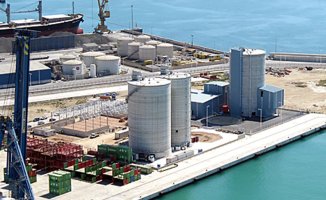Civil conflict and political collapse. The consequences of a prolonged drought in the ancient Mayan capital of Mayapán, in the Yucatán peninsula, were so devastating that they led to the collapse of this city, in which around 20,000 people lived between the 13th and 15th centuries.
As archaeologists reveal in an article published in the journal Nature Communications, Mayapán was abandoned just after a rival group, the Xiu, massacred the Cocom, the powerful ruling family. Historical records date this attack to sometime between the years 1441 and 1461.
The point is that, according to the team of researchers, the beginning of the end began much earlier. The new evidence found shows that the drought that took place the previous century may have played an important role in the disappearance of the city. A detail that is especially relevant at the time of climate change in which we live.
Recent excavations at Mayapán have uncovered shallow mass graves and evidence of brutal massacres in monumental structures throughout the city. "Some corpses were placed with knives in the pelvis and ribs, and other skeletal remains were cut and burned," explains Professor Marilyn Masson of the University at Albany.
“They not only smashed and burned the bodies, but also smashed and burned the effigies of their gods. Basically it is a form of double desecration”, adds the archaeologist. The historical documents studied helped to contextualize these facts.
Still, these findings were not the most shocking. The most surprising detail came when the skeletons were dated using accelerator mass spectrometry from the Department of Anthropology at the University of California, Santa Barbara.
The dates obtained placed the skeletal remains between 50 and 100 years before the historic city fell to its conquerors in the mid-15th century. "This was a case where archeology reveals something that is not told in history," Masson said.
There are many historical records supporting the fall and abandonment of Mayapán around 1458. But new evidence of a massacre that occurred up to a century earlier, along with climate data detailing a prolonged drought around that time, led the team to suspect that environmental factors could have greatly influenced the collapse of the Mayan capital.
Scientists calculated annual rainfall levels for that period using a process based on calcite deposits from nearby caves and found a drying trend throughout the 13th century. In particular, they discovered a significant relationship between the period with lack of water and the substantial decline in population between 1350 and 1430.
The Maya relied heavily on rainfed corn, but lacked centralized long-term grain storage. That is why it is believed that the impacts of rainfall levels on food production are related to human migration, population decline, wars and changes in political power, according to the study.
"It's not that droughts cause social conflict, but they create the conditions in which violence can break out," says Masson. The researchers suggest that the Xiu, who launched the last attack on the Cocom, used subsequent droughts and famines to foment unrest and rebellion that led to mass deaths and emigration from Mayapan in the 13th century.
However, after this period of lack of water and upheavals, the city seems to have recovered briefly with the help of acceptable levels of rainfall around the year 1400. “Mayapan was remade but in the 1420s the droughts returned. It was too soon and they didn't have enough time to recover. The tensions were still there and the city government could not survive so many open fronts”, adds Marilyn Masson.
"Human responses to the lack of rain in the Yucatan peninsula... were complex," the study concludes. “On the one hand, the drought stimulated civil conflict and institutional failure in Mayapán. However, even after the fall of the city, despite decentralization, intervals of mobility, temporary shocks to trade, and continuing military conflicts, a resilient network of small Mayan states persisted, encountered by Europeans in the early 19th century. 16th century”, he concludes.













